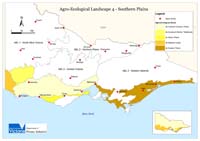Primary Production Landscapes of Victoria - Southern Plains - Farm Forestry farming systems
Primary Production Landscapes Home | Southern Plains Home
| Land use Covering 51 local government areas and 6 catchment management authority regions, the major land use of the Southern Plains is production from dryland agriculture cropping, grazing and dairy) and forestry (77%). New blue gum forestry plantings are estimated to be 10,000 – 14,000 hectares per year. This has moderated since 8-10 years ago. Irrigated agriculture (8%) and intensive uses including horticulture and animal production (36% of Victoria’s land use) occur also. Rainfall varies from 450 mm west of Melbourne to 1100 mm at the foothills of the Southern Uplands. |
| Primary Production Landscapes Victorian Volcanic Plains Volcanic cones, lava flows and ash deposits are used mainly for grazing and cropping. Rainfall is higher and evaporation less than plains north of the divide. Dundas & Merino Tablelands Otway Plains Millicent Coast Eastern Plains | 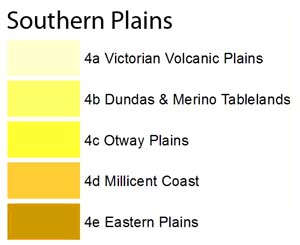 |
Management practices and issues in response to Climate Change
| 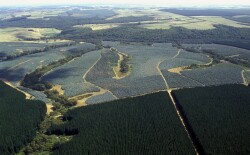 |
Future scenarios for farming systems
- Experiences in growth rates and selection criteria will likely see changes in selection criteria to suit climate change. Drier seasons may also pose an increased fire threat to plantations.
- Currently nearing the end of the plantation establishment phase. There will be a move to harvest and rate of expansion unlikely to continue. Carbon trading is an unknown factor here.
- Will price fluctuations in wood and competition from other grain and dairy industries increase pressure on forestry in higher rainfall landscapes?
- Logistical issues including transport infrastructure and mills for processing an expected 3.5 M tonnes of wood in the next decade be addressed?
- Workforce shortages for harvesting are also a major issue.
- Global demand for wood and pulp is not decreasing though price fluctuations in the market is an issue.
- Significant lack of investment in non-commercial species for water conservation approaches. This includes work on hybrids with low rainfall genetics and seed breeding trials.
Victoria’s changing climate
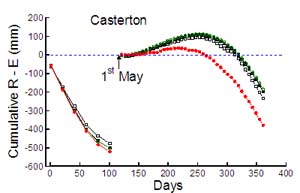 | 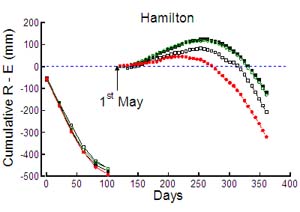 | 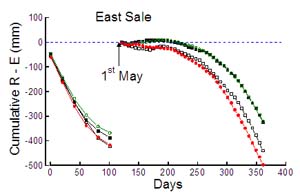 |
1970-1995 | 1996-2005 | 2050 A1FI prediction |
 |  |  |
1970-1995 | 1996-2005 | 2050 A1FI prediction |
 |  |  |
 | ||

